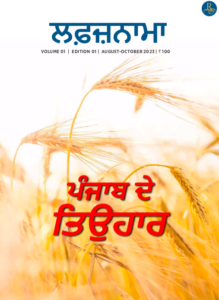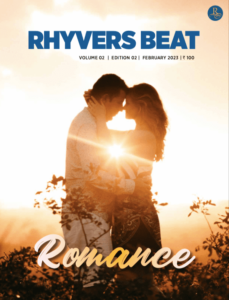Haiku Blossoms (14)

Haiku and Senryu
Dear Readers, we have explored haiku in the first 13 episodes of Haiku Blossoms. This week let us move to senryu, which is a short form of Japanese poetry similar to haiku having the same 3-line unrhymed structure of haiku. However, senryu tend to be about human foibles and emotions, while haiku are inspired by nature. Senryu are often witty, cynical, or darkly humorous, commenting on daily life, and the socio-political scene.
Alan Pizzarelli, former Senryu Editor, Simply Haiku defines: “Senryu is a short poetic genre which focuses on people. Men, women, husbands, wives, children and relatives. It portrays the characteristics of human beings and the psychology of the human mind. Even when senryu depicts living things such as animals, insects, and plant life, or when they depict inanimate objects, they are portrayed with the emphasis on their human attributes….”
To enlighten readers on senryu, I draw excerpts from Dr. Pravat Kumar Padhy’s essay “Senryu: The Literary Genre and Its Journey” with his kind permission. He elaborates:
“Structurally both haiku and senryu look similar in the format of 5-7-5 Japanese sound syllable counts (onji) and are written in English language as short/long/short style. Haiku is written with season word (kigo) or seasonal reference (kidai) with juxtaposition and is related to nature. However, senryu is more of human element or behaviour with satire, playful, wit, and sometimes nostalgic as well. Unlike haiku, kigo and kireji or verbal caesura (cutting words) are not mandatory in Senryu, though some do use seasonal references and kireji as well. Senryu is also regarded as satirical haiku. Senryu is essentially one element or observation (though a few write in two-part format) unlike the fragment and phrase of haiku. Haiku is more profound, sublime and the poet immerses in the object whereas the senryu writer remains outside as an observer or expresser of the feeling of human-centric experience.
Karai Hachiemon (1718-1790), pen name Karai Senryu, composed short non-rhyming humorous verses in the form of 5-7-5 .This haikai- related genre was named after him as Senryu. In Japanese, the word senryū means river willow.
The following poem is believed to be Karai’s final senryu :
*
Write me down
As one who loved senryu,
And loose women.
*
The Japanese immigrants in the USA who arrived in Yakima Valley in the 1890s rejuvenated the art of senryu by reinventing the content of the poems by referring to their challenging life sketches, anxieties, and cultural aspects during the early twentieth century.The followings are some senryu personal in content and emotional in expression:
*
Next morning,
all sobered up. Damn.
Sake brewed brawls.
-Shigetaka “Kentsuku” Kurokawa (1912)
*
To the west I look,
twenty years, day after day.
(My) tears wet the sky.
-Kido (1934)
*
In 1985, Shuho Ohno introduced the book, ‘Modern Senryu in English’ in the refined version of senryu, and subsequently, it yielded reasonable literarypopularity in the genre. (Gendai Senryu with the format of haiku).
R H Blyth published a translation volume (with illustrations) on ‘Senryu: Japanese Satirical Verses’ in 1949 (The Hokuseido Press). Blyth’s ‘Japanese Life and Character in Senryu’, 1960 and ‘Edo Satirical Verse Anthologies’, 1961,Tokyo:
Hokuseido Press are the landmarks in senryu literature. Michael McClintock edited ‘Seer Ox: American Senryu Magazine’ in the 1970s. ‘Fig Newtons:Senryū to Go’, the first anthology of English-language senryū, was published by Michael Dylan Welch in 1993.
Haruo Shirane writes: “The fundamental differences between modern haiku and senryu can be traced to their historical origins. Haiku was originally the opening verse (hokku) of a linked-verse sequence, and senryu was an offshoot of the added verse. Consequently, senryu does not require a seasonal word (kigo), which marks the occasion of the hokku’s composition and connects it to nature and to the larger poetic tradition. Unlike the hokku, senryu does not require a cutting word (kireji), which usually splits the verse into two syntactic parts….”
At times it becomes very difficult to distinguish between haiku and senryu as poets mix up the imageries of modern urban lifestyle and occasionally also with some reference to nature. The haiku Masters had written poems with a touch of humor and wit. Blyth, in translating the poems, exemplifies how some of the poems by Busan (1716-1783), Issa (1763-1827), and Shiki (1867-1902) have a close resemblance with senryu with irony, cynicism, witticism, and humor and also cited some of the haiku by Basho with a touch of parody:
The Rose of Sharon
By the road-side,
Was eaten by my horse.
-Basho
*
A woman showing
A charcoal-seller his face,
In a mirror.
-Buson
*
From bathtub
To bathtub, —
Stuff and nonsense!
-Issa
*
Setting out
In a straw hat,—
He must be going to his native place!
-Shiki
*
The person I wrote
the book for
does not buy a copy
*
Rightly Anita Virgil says: “If it is man within the world, it is haiku. If it is the world within the man, it is senryu.” Over the years, it is becoming a much more polished genre and many leading journals publish senryu with human-centric values. Unlike haiku, literary devices like allusion and parts of speech (simile, metaphor, etc) are used in writing senryu along with parody and irony. Senryu comprises dominantly contemporary and occasionally classical images to portray the common happenings and with time there have been a lot of overlapping between the two genres.
Susumu Takiguchi elaborates senryu in a different perspective: “The main characteristics of Japanese senryu are summarized as okashimi (humour), ugachi (insightful and penetrating observations) and karumi (light-heartedness), though not all of these need to be present in all senryu, except perhaps for karumi…”
He has selected the following senryu as his best choice.
gossip column—
only the ink remains
unsmeared
-Carol Raisfeld, US
Editor’s Choice, The grand Best, World Haiku Review, Vol.5, Issue 1, 2005
*
cup final
he took the penalty to kick
himself!
-Vinodh Marella (yajushi), India
Editor’s Best Senryu, World Haiku Review, January 2007
*
In modern times, we come across a lot of haiku which are on the borderline between the two genres. George Swede classified them into three types: Nature haiku, Human haiku (senryu), and Human plus nature haiku (hybrids). Let us discuss these three types with examples for a better understanding.
Nature haiku: It has a reference to nature with seasonal words or kigo without any
reference to humans.
milky way –
lightning splits
the darkness
-Pravat Kumar Padhy
BEST OF ISSUE (Second Choice), Haiku Reality, Vol. 12, No 20, Summer 2015
*
Human haiku (senryu): It primarily refers to aspects of human nature without any
comparison with seasonal aspects.
at the height
of the argument the old couple
pour each other tea
-George Swede
*
seasonal reference in the above senryu and also there is no grammatical break.
Human plus nature haiku (hybrids):
Swede opines, “Human plus nature haiku (or hybrids) include content from the
natural as well as the human world (and) often include kigo. They are the most
frequently published kind of haiku–around 60%.”
Michael Rehling, the editor of Failed Haiku, writes how the inference of humans is
interpreted even without directly mentioning it in the following poem:
long night
the grass grows
with ease
-Pravat Kumar Padhy, Failed Haiku: A Journal of English Senryu, Vol 3, Issue 25,
2018
*
the fat lady
bends over the tomatoes
a full moon
-AI Pizzarelli, The Haiku Society of America Minutes, 1972
*
orthopedic clinic
a three-legged chair
outside the entrance
– Johannes Manjrekar, Temps Libre 2004
*
leaving for work
my husband kisses the dog
and pats me on the head
-Donna Foulke, Simply Haiku, vol. 6 no. 2, 2008
*
seasonal delicacy
the chef whips up his iPhone
for translation
-Bruce H. Feingold, Magnapoets, Issue 9 January 2012
*
my application to be
a) human
-Alan Summers, Haiku News, Vol. 2, No. 24, 2013
*
buying a jeans belt
the salesgirl measures me –
I hold my stomach in
-Freddy Ben-Arroyo, Earshik: A Journal of Senryu and Kyoka, Special
Issue, April 2014
*
long wait
knitting the tension
into a scarf
-Rachel Sutcliffe, Cattails January 2015
*
simplicity
i need so many words
to explain it
-Mike Rehling, Prune Juice, Issue 18, March 2016
*
courtroom––
how white the shirt
of the rapist
-Arvinder Kaur, First Place, 6th Annual H. Gene Murtha Memorial Contest, 2021
*
his first roti–
the migrant worker feeds
the stray
-Neena Singh, Prune Juice, Issue 34, on July 1, 2021
*
first cut—
the watermelon seller bites
into his profit
-Kala Ramesh, HM, The Seventh Annual H. Gene Murtha Senryu Contest, 2022
Grateful to Dr. Pravat Kumar Padhy for sharing his research with us generously. The essay in its entirety may be read here:: https://www.thewiseowl.art/















